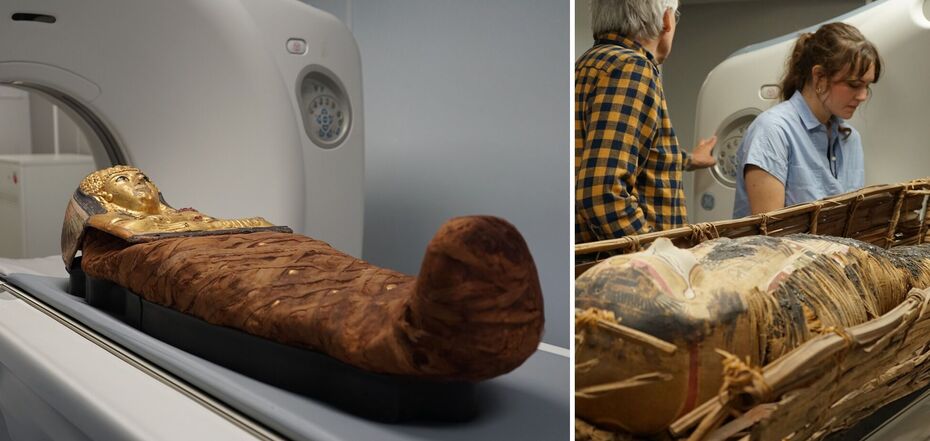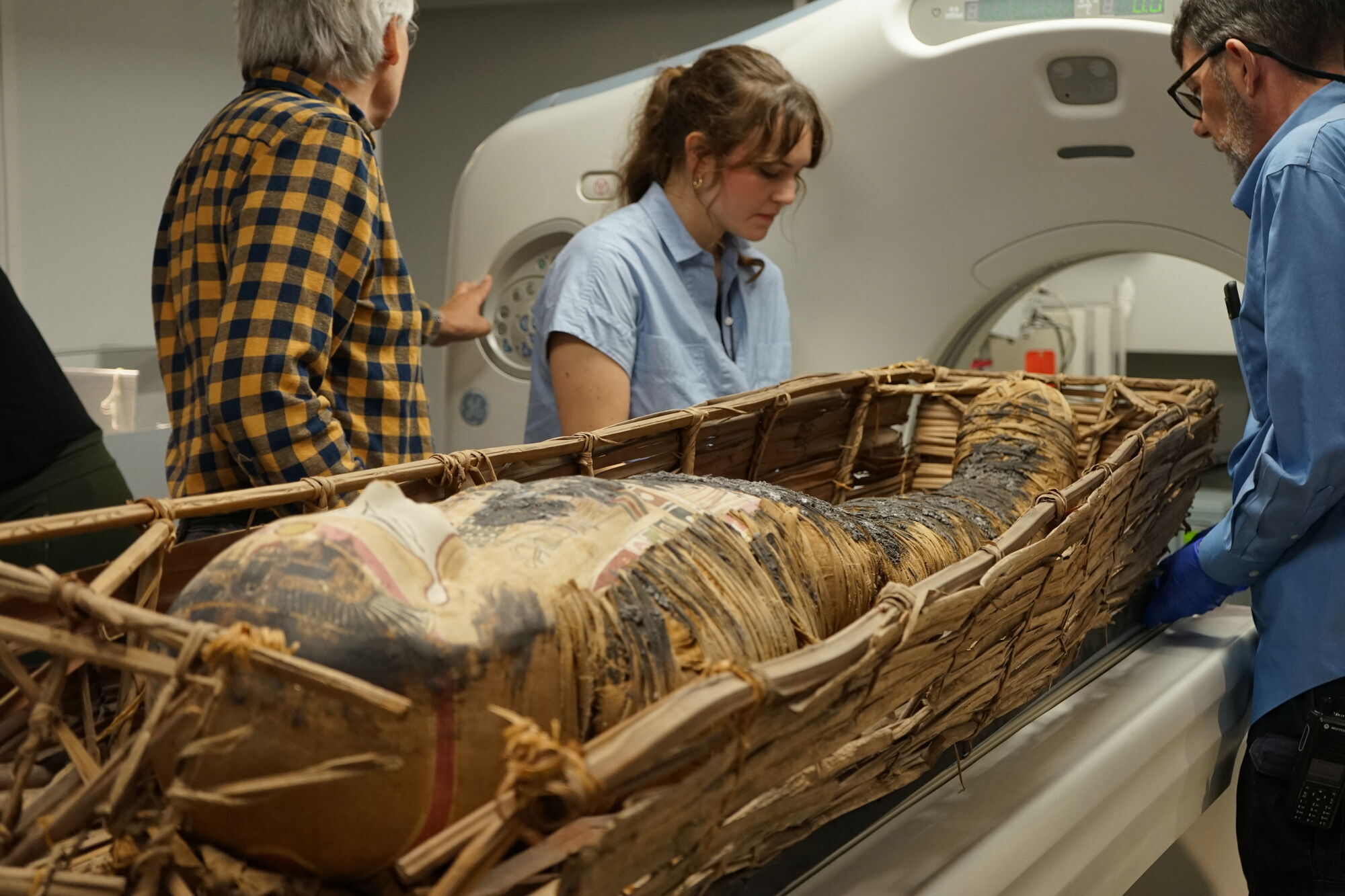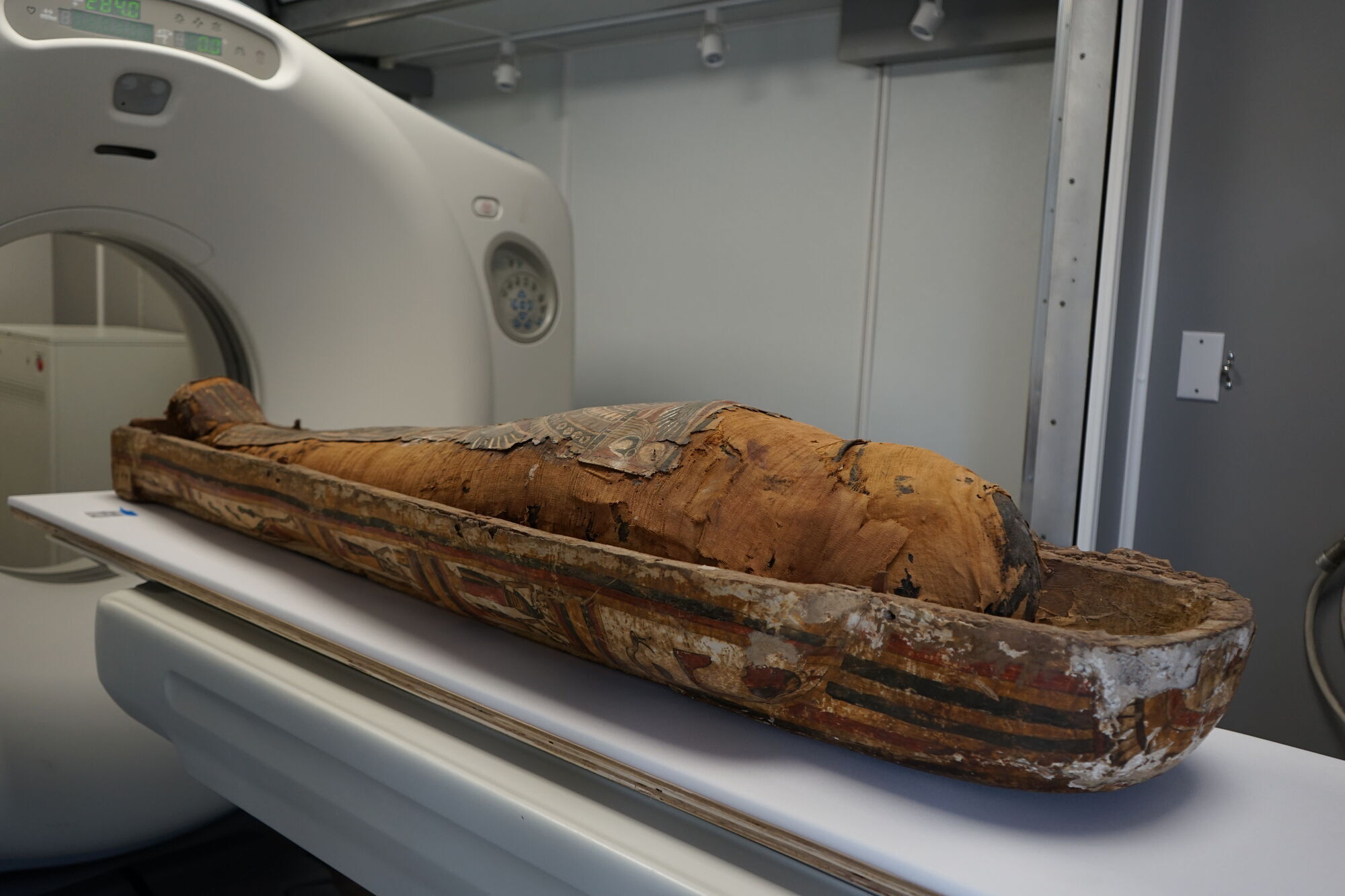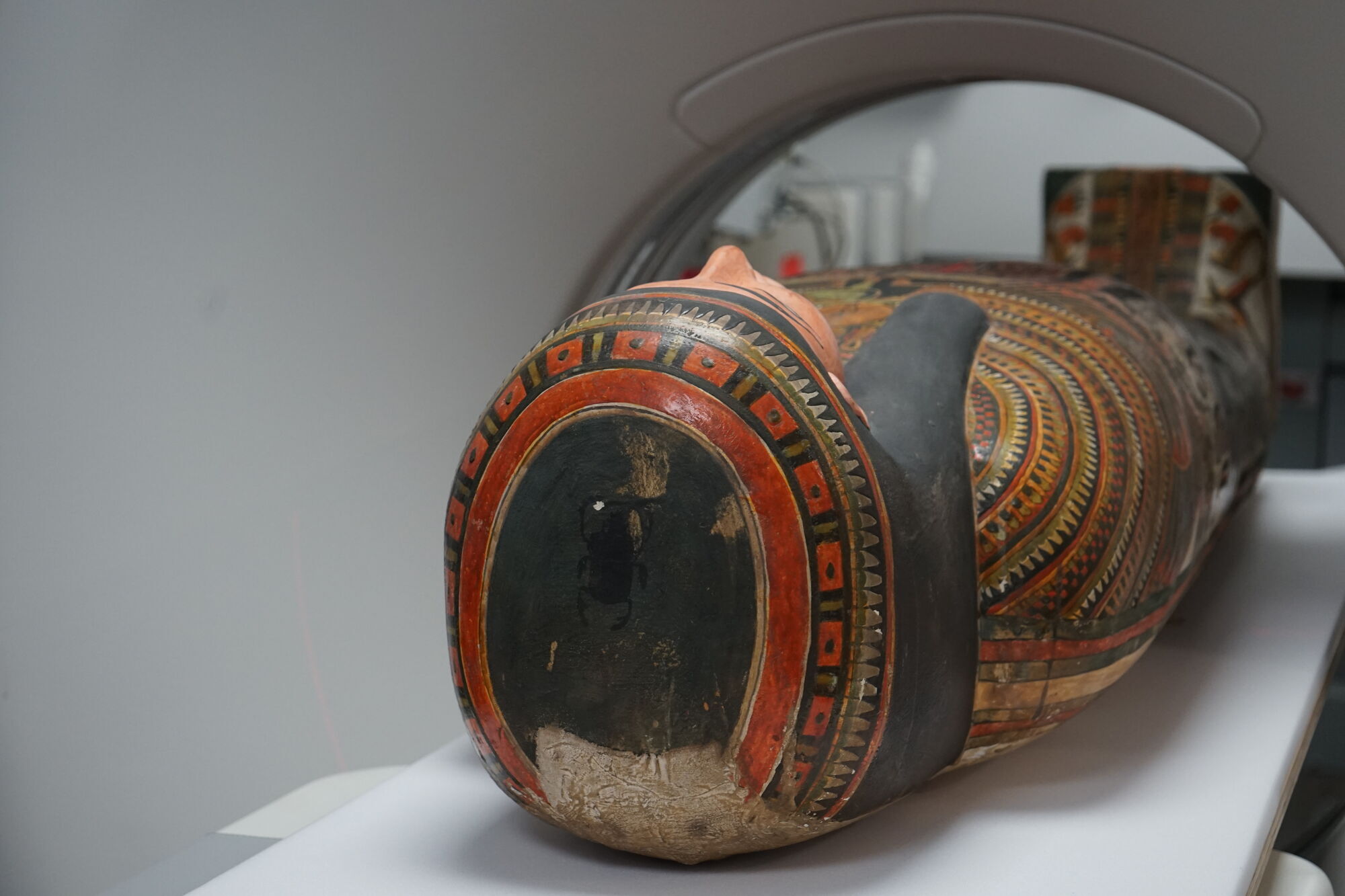News
The mystery of decades. It became known how a 3000-year-old Egyptian mummy was placed in a coffin without a single hole
Scientists from the Field Museum of Natural History in Chicago were able to look into Lady Chenet-aa's sarcophagus for the first time to finally understand how she was embalmed 3000 years ago. The mystery was solved with the help of an X-ray scan.
For many years, researchers had been looking for an opening in the cavity, finding only a tiny slit at her feet. But this was clearly not enough to fit the woman's body inside. The new computed tomography (CT) scans have resolved some of the questions that have plagued scientists for decades, MailOnline reports.
When the team put the coffin through a CT scanner, they were able to take a closer look at the bottom, where they found a seam running down the back and some lacing.
Researchers at the Field Museum in Chicago estimate that the woman was in her late 30s or early 40s when she died, and detailed attempts to prepare her for the afterlife confirmed that she had a high social status.
The most unusual aspect of Lady Chenet-aa's coffin was the fact that it had no seams or openings that would have allowed the embalmers to place her body inside. However, the 3D scan revealed that instead of cardboard being built around the body, as was common for the ancient Egyptians, the coffin was first created and then softened with humidity so that it was flexible and could be molded around the woman.
According to Stacey Drake, manager of human remains collections at the Field Museum, filler was placed in Lady Chenet-aa's trachea to ensure that her neck would not collapse, and artificial eyes were placed in her eye sockets to ensure that she would have them in the afterlife.
"The additions are very literal. To have eyes, they have to be physical, or at least some physical hint of eyes. They installed the prosthesis to make sure she has everything she needs when you go to the afterlife," CNN quoted J.P. Brown, the museum's senior conservator of anthropology, as saying.
The slit through which the body was placed in the coffin was cut from the top to the bottom of the coffin. After they laced up the back of the coffin, they placed a wooden panel at her feet and tacked it in place to keep her from moving while they formed the coffin.
"From an archaeological point of view, it's incredibly rare that scientists have the opportunity to study or look at history from the perspective of one person. It's a really great way for us to see who these people were-not just what they created and the stories we've made up about them, but the actual individuals who lived at the time," Drake said.
According to Brown, the ancient Egyptians looked at the afterlife in a similar way to how modern people think about retirement savings. Not every ancient Egyptian was mummified, but the limited practice was apparently common among the upper middle class and people of high status.
"It's something they prepared for, saving money throughout their lives and hoping they would have enough at the end to really enjoy. To live their best life after death," he said.
Only verified information is available on the OBOZ.UA Telegram channel and Viber. Do not fall for fakes!































